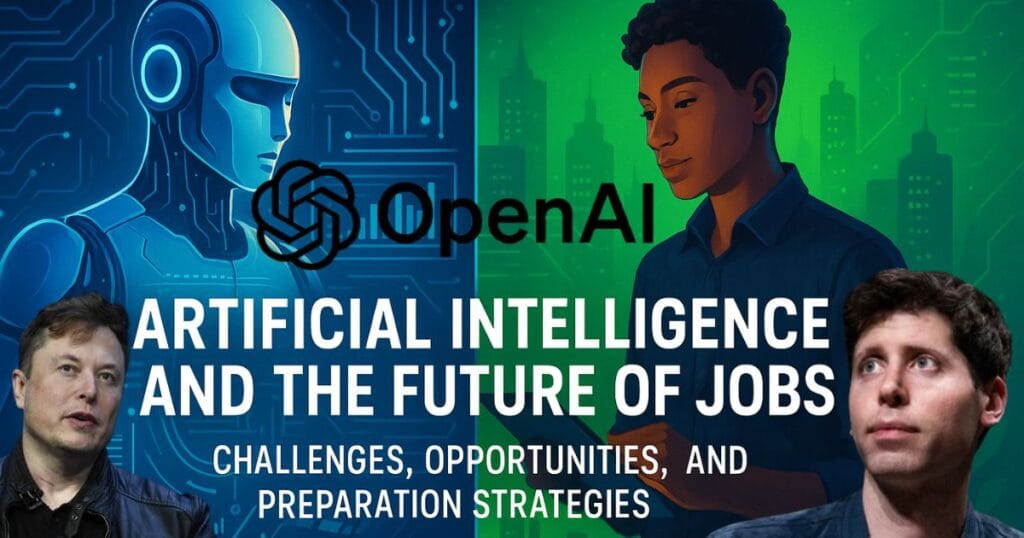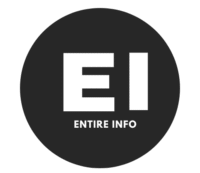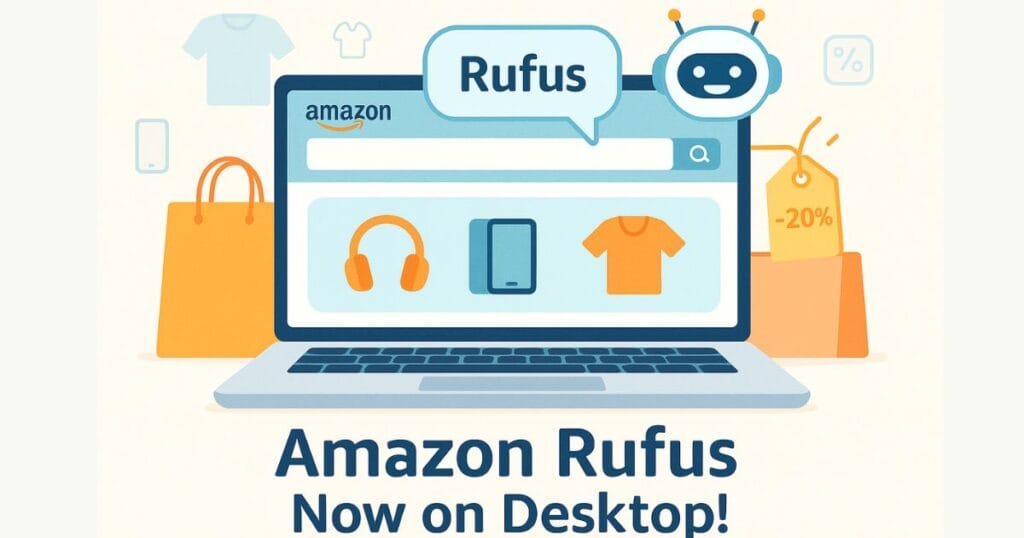In today’s fast-evolving world, Artificial Intelligence (AI) is transforming every industry. This technology is making computers smarter, enabling them to perform tasks like human conversation, object recognition, data analysis, and even complex decision-making. However, with this technological leap comes a pressing concern: is AI taking away our jobs? In 2025 alone, the United States saw over 10,000 job cuts due to AI adoption, particularly in sectors like technology, banking, media, and manufacturing. According to a Goldman Sachs report, approximately 300 million jobs worldwide are at risk of automation.

But it’s not all doom and gloom. Artificial Intelligence (AI) is also creating new opportunities, such as roles for machine learning engineers, AI ethicists, and data scientists. If not handled thoughtfully, however, this shift could widen the wealth gap, especially for young professionals, and necessitate widespread reskilling. In this article, we’ll dive deep into the impact of AI on jobs, explore the reasons behind layoffs, highlight emerging roles, and provide actionable strategies to stay ahead in this AI-driven era. By embracing AI strategically, we can turn challenges into opportunities for a better future.
Current Landscape: The Wave of Layoffs and Artificial Intelligence (AI)’s Role
From 2024 to 2025, the technology sector has faced a storm of layoffs, with Artificial Intelligence (AI) playing a significant role. According to Layoffs.fyi, over 132,000 tech workers lost their jobs in 2025, with companies like Microsoft, Google, and Intel leading the cuts. In July 2025 alone, AI-driven automation led to 10,000+ job losses, a staggering 140% increase from the previous year.
Most Affected Sectors
- Technology: Over 89,000 job cuts, primarily in software and IT services.
- Customer Support: Chatbots and voice assistants are replacing call center roles.
- Data Analysis and Media: AI tools automate data processing and content creation.
- Finance: Wall Street estimates 2 million jobs at risk due to AI.
- India’s Scenario: Companies like TCS have replaced 12,000 jobs with AI systems.
CEOs argue that Artificial Intelligence (AI) boosts efficiency and cuts costs, but economic pressures, such as over-hiring during the pandemic and rising interest rates, are also driving layoffs. This trend is likely to intensify, impacting millions of households. The question is: how do we adapt to this rapidly changing landscape?
What an Artificial Intelligence (AI) Displaces Jobs: The Mechanism
How does Artificial Intelligence (AI) eliminate jobs? The answer lies in automation. Repetitive tasks—such as data entry, customer service queries, or basic coding—are now handled by AI tools with precision and without downtime. For example:
- Chatbots: Provide 24/7 customer support, reducing the need for human agents.
- Coding Tools: Tools like GitHub Copilot can write 50% of code automatically, decreasing demand for junior programmers.
- Manufacturing: Robots in warehouses handle inventory, minimizing human errors but also jobs.
A Microsoft study shows AI increases productivity by 14%. McKinsey predicts that by 2030, 45% of jobs could be affected by AI. However, AI also creates roles like AI trainers and ethics specialists, signaling a shift rather than a complete loss of opportunities.
Job Roles at Risk vs. Emerging Roles
Jobs at Risk
- Data Entry: Repetitive number-crunching tasks.
- Telemarketing and Customer Service: Replaced by chatbots and voice assistants.
- Receptionists and Support Staff: Automated systems take over.
- Market Research and Sales: AI can handle 53-67% of tasks in these roles.
Emerging Roles
- AI Specialists and Machine Learning Engineers: Designing and training AI systems.
- AI Ethicists: Ensuring ethical use and bias-free AI.
- Cybersecurity Experts: Protecting AI systems from threats.
- Data Scientists: Analyzing data for AI-driven insights.
The World Economic Forum estimates 97 million new jobs by 2025. Platforms like Coursera and LinkedIn report surging demand for AI and robotics skills, highlighting the need for reskilling.
Are Layoffs Solely Due to Artificial Intelligence (AI)?
Not entirely. Layoffs stem from multiple factors:
- Economic Pressures: Fear of recession and rising interest rates.
- Strategic Shifts: Companies redirect resources to AI and innovation.
- Pandemic Overhiring: Excess staff hired during COVID-19 are now being cut.
For instance, Microsoft laid off 15,000 employees but invested $10 billion in OpenAI, showing a shift in priorities. While AI improves efficiency, companies sometimes use it as an excuse for cost-cutting, often overlooking the human toll.
Case Studies: Real-World Examples
- IBM: In 2024-2025, IBM replaced 8,000 HR roles with AI but later rehired some staff for tasks AI couldn’t fully handle. Total cuts reached 10,000, but investments in new areas grew.
- Google: In 2025, thousands of layoffs targeted entry-level roles to focus on AI projects. CEO Sundar Pichai emphasized reallocating resources to AI innovation.
- Microsoft: Over 15,000 cuts in management and support roles. CEO Satya Nadella called it a tough but necessary move, though it sparked youth unemployment concerns.
Employee Perspective: Challenges of Job Loss
Those who lose jobs face significant hurdles:
- Reskilling Challenges: 76% of employers believe workers can reskill, but time and financial constraints are barriers.
- Mental Stress: Fear of change, loss of trust in employers, and financial strain.
- Economic Pressure: Supporting families becomes tougher.
Online platforms like Coursera and Udemy offer solutions, but 65% of U.S. workers fear AI’s impact. In India, young professionals face similar anxieties, underscoring the need for support systems.
Role of Governments and Policymakers
In India, NITI Aayog is pushing reskilling through public-private partnerships. Key recommendations include:
- Universal Basic Income (UBI): Financial support during job transitions.
- Training Programs: Government-backed courses for AI skills.
- Tax Incentives: Encouraging companies to fund reskilling.
Reports suggest India could see 50 million new jobs, but a skills gap remains a challenge. Swift policy action is critical to mitigate AI’s disruptions.
Best Practices for Companies
- Transparency: Communicate AI decisions clearly to employees.
- Gradual Automation: Allow time for workers to transition to new roles.
- Reskilling Programs: Train employees for AI-related roles.
- Ethics: Monitor AI for biases and privacy issues.
Practical Guide for Professionals
- Learn AI Basics: Start with Google’s AI Essentials course (free).
- Master Prompt Engineering: Try Coursera’s Generative AI course.
- Data Skills: Learn Python or SQL on Udemy.
- Creative Thinking: Take LinkedIn Learning’s Design Thinking course.
- Networking: Connect with professionals on LinkedIn or Meetup.
- Certifications: Pursue Microsoft or IBM AI credentials.
- Freelancing: Explore AI projects on Upwork.
- Portfolio: Build projects on GitHub to showcase skills.
Benefits of Artificial Intelligence (AI)
- Efficiency: Boosts productivity by 66%.
- New Industries: AI is revolutionizing healthcare and education.
- Entrepreneurship: Small businesses can scale 5x faster with AI.
- New Jobs: 170 million new roles expected globally.
Read TechCrunch- A comprehensive list of 2025 tech layoffs
Expert Opinions on Artificial Intelligence (AI)
- Vinod Khosla: “AI will transform 80% of jobs in 5 years, creating a new economy.”
- Elon Musk: “AI may take most jobs, but creative and hobby-based roles will persist.”
- Sam Altman: “AI will handle 95% of marketing tasks, reshaping roles.”
Myths vs. Reality
- Myth: AI will take all jobs.
Reality: It will create 97 million new jobs. - Myth: AI is smarter than humans.
Reality: It’s a tool that supports human decision-making.
ALSO READ- OpenAI and Oracle $30 billion deal to GPT-5: The Future of AI Unveiled
Conclusion: The Path Forward
View AI as an opportunity, not a threat. Reskill through online courses, embrace change, and stay positive. Governments and companies must support reskilling and ethical AI use. With the right preparation, you can thrive in this AI-driven world.
How many jobs will Artificial Intelligence (AI) take?
300 million jobs are at risk, but 97 million new ones will emerge.
Which jobs are safe?
Manual and creative roles like plumbers and nurses.
What is Artificial Intelligence (AI)’s benefits?
66% faster work, new industries, and 170 million jobs.


